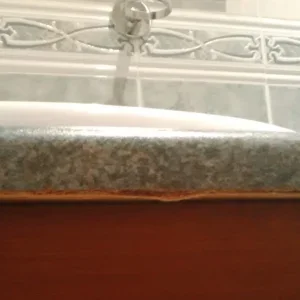In the last issue I mentioned the high moisture contents found in living trees and therefore in any fresh wood that is used to make wood based panels. Whatever the panel type and whatever the origin of the wood, that wood must be dried at some point in the production.
In the panel industry, moisture contents are most often expressed on a dry basis, ie the water content is expressed as a percentage of the oven-dry weight of wood present (see equation). So a wood sample with a moisture content of 100% is half water and half oven-dry wood. Such high moisture contents are common, especially in the outer parts of the tree where the sap is found.
Modern manufacturing lines producing, say, 350,000m3/year, may have to evaporate over 100,000 tons of water per year. The energy needed to evaporate 1kg of water is 2.5MJ. Since the water is in the wood, rather more energy is used to evaporate water and so this factory may use more than 300TJ (83GWh) just to evaporate the water. Drying is therefore an energy-intensive part of the panel manufacturing process.
Most of the particleboard industry uses single-pass and three-pass dryers. Single pass dryers tend to be more common now because they are more energy efficient. A typical three-pass dryer uses between 3.3-3.7MJ/kg, whereas a single-pass dryer tends to use a little less: 3.2-3.5MJ/kg. The greater efficiency mainly comes from the fact that the particles have more direct contact with the dryer insides in a single pass and so conduction, which is more effective than convection, makes a greater contribution to the heating of the particles. Currently, the largest single-pass dryer is that installed at Masisa do Brasil’s Montenegro plant; it has a capacity of 126tph.
The MDF industry tends to use tube dryers. These are long – often more than 100m – small diameter tubes in which air travels at 30-40m/sec and so fibres emerge, dry, in just a few seconds. Tube dryers use large volumes of air to ensure rapid drying and to keep the fibres as separate as possible since they have already been sprayed with glue in the blowline.
These immense volumes of water leave the factories as large, white plumes of water vapour, which many erroneously assume is smoke. Thanks to these plumes, panel factories are generally easy to find! The plumes tend to be smaller in modern factories that have WESPs fitted; if you want to know what a WESP is, then you will have to read the next issue.






